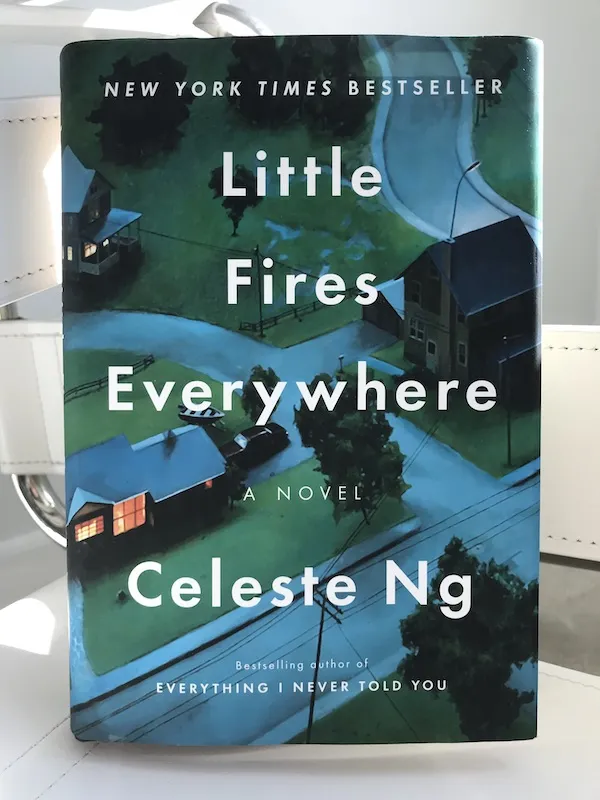
15 Book Club Questions for LITTLE FIRES EVERYWHERE
This content contains affiliate links. When you buy through these links, we may earn an affiliate commission.
Looking for Little Fires Everywhere book club questions for your next discussion? We’ve got you covered.

Why is Little Fires Everywhere a great book club book?
To those out on their own paths, setting little fires This is the book dedication in Celeste Ng’s second novel, Little Fires Everywhere—a New York Times bestseller and the source material that inspired Reese Witherspoon to produce a TV series of the same name (slated to be released in 2020). When you read a dedication like that, you know you’re about to dig into a story, simmering with provocative themes and big questions that will keep your book club thinking and talking for hours.
Themes in Little Fires Everywhere
Before jumping into Little Fires Everywhere book club questions, let’s talk about some of the book’s themes. Note that this post may contain spoilers. At the center of this story are two families: the affluent Richardsons and their tenants, the Warrens, who rent the second floor of a duplex across town. Both families’ lives—and their peaceful suburban community—are upended when friends of the Richardsons become embroiled in a controversial custody battle over an adopted Chinese American baby. Of course, the theme in this novel that can’t be ignored is: How do you decide who makes a better parent to a child? In the case of this particular baby, both racial politics and socio-economic factors come into play. But woven into the overarching adoption narrative are multiple storylines with complex layers of symbolism. Little Fires Everywhere is a story about mothers—their relationships with their children and the choices they make to balance motherhood with the rest of their lives. It’s also a story about the burden of secrets, the search for identity, and the complications that can come with living in a carefully planned suburban community.Little Fires Everywhere Book Club Questions
- You could say that this story begins with the ending. Within the first paragraph, we learn that a house has burned down and that the town is divided over the identity of a child. Why do you think Celeste Ng structured the opening this way? How do you think it affects your journey through the story?
- Izzy Richardson is the character who literally sets little fires everywhere. What are some of the symbolic little fires being set in the book? What other meanings do fire and burning take on in the book?
- The two mothers at the heart of the story, Elena and Mia, take on motherhood in very different ways, from the ways they plan for it to the choices they make as working mothers. How do you think this contributes to their feelings about the adoption controversy?













